![]()
![]()
![]()
Use LEFT and RIGHT arrow keys to navigate between flashcards;
Use UP and DOWN arrow keys to flip the card;
H to show hint;
A reads text to speech;
12 Cards in this Set
- Front
- Back
|
Geological time scale supercalifragilisticexpialidocious |
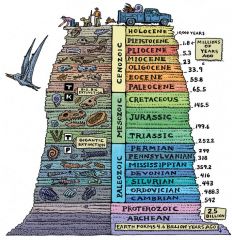
The geologic time scale (GTS) is a system of chronologicalmeasurement that relates stratigraphy to time, and is used by geologists, paleontologists, and other Earth scientists to describe the timing and relationships between events that have occurred throughout Earth’s history. The table of geologic time spans presented here agrees with the nomenclature, dates and standard color codes set forth by the International Commission on Stratigraphy. |
|
|
Precambrian Era |
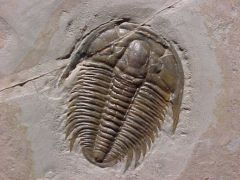
It spans from the formation of Earthabout 4.6 billion years ago |
|
|
Palozoic Era |

spanning from roughly 541 to 252.17 million years ago (ICS, 2004). It is the longest of the Phanerozoic eras, and is subdivided into six geologic periods(from oldest to youngest): the Cambrian, Ordovician, Silurian, Devonian, Carboniferous, and Permian |
|
|
Mesozoic era |

252 to 66 million years ago. It is also called the age of reptiles, a phrase introduced by the 19th century paleontologist Gideon Mantell who viewed it as dominated by reptiles such as Iguanodon, Megalosaurus, Plesiosaurus and what are now called Pseudosuchia.[ |
|
|
Cenozoic era |
![The Cenozoic Era (/sɛnɵˈzoʊɪk/ or /ˌsiːnɵˈzoʊɪk/; also Cænozoic, Caenozoic or Cainozoic; meaning "new life", from Greek καινός kainos "new", and ζωή zoe "life"[1]) is the current and most recent of the three Phanerozoic geolog...](https://images.cram.com/images/upload-flashcards/38/63/71/7386371_m.jpg)
The Cenozoic Era (/sɛnɵˈzoʊɪk/ or /ˌsiːnɵˈzoʊɪk/; also Cænozoic, Caenozoic or Cainozoic; meaning "new life", from Greek καινός kainos "new", and ζωή zoe "life"[1]) is the current and most recent of the three Phanerozoic geological eras, following the Mesozoic Era and covering the period from 66 million years ago to the present. |
|
|
Uniformitarianism |
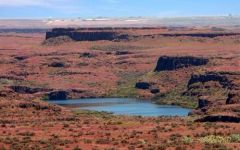
Uniformitarianism is the assumption that the same natural laws and processes that operate in the universe now have always operated in the universe in the past and apply everywhere in the universe. |
|
|
Realities age dating |
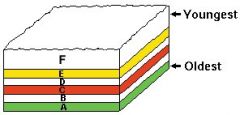
Relative dating is the science of determining the relative order of past events, without necessarily determining their absolute age. |
|
|
Law of superstition |
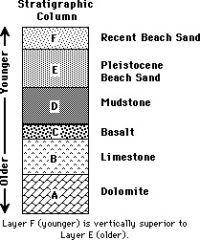
The law of superposition (or the principle of superposition) is a key axiom based on observations of natural history that is a foundational principle of sedimentary stratigraphy and so of other geologydependent natural sciences: |
|
|
Absolute age dating |
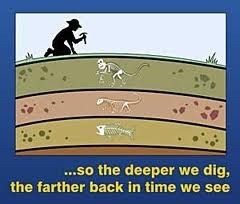
Absolute dating is the process of determining an approximate computed age in archaeology and geology. |
|
|
Fossil Index fossil and Trace fossil |

trace-are geological records of biological activity. Trace fossils may be impressions made on the substrate by an organism: index-Index fossils (also known as guide fossils, indicator fossils or zone fossils) are fossils used to define and identify geologic periods |
|
|
cast |
Fossils formed when water containing minerals leak. |
|
|
Mold |
fossils formed when the sediments surrounding a buried organism hardens |

